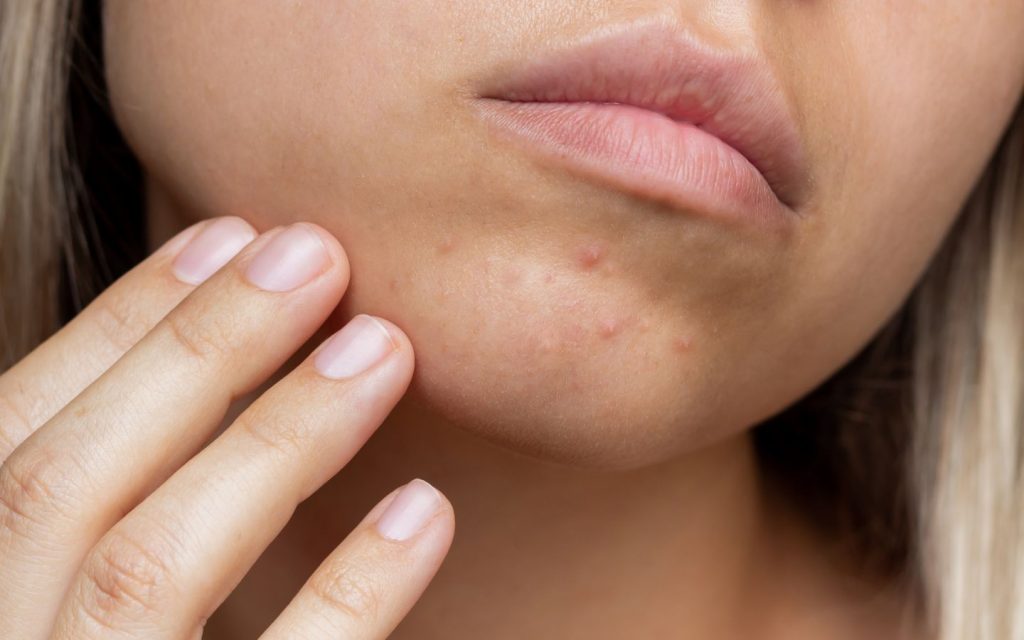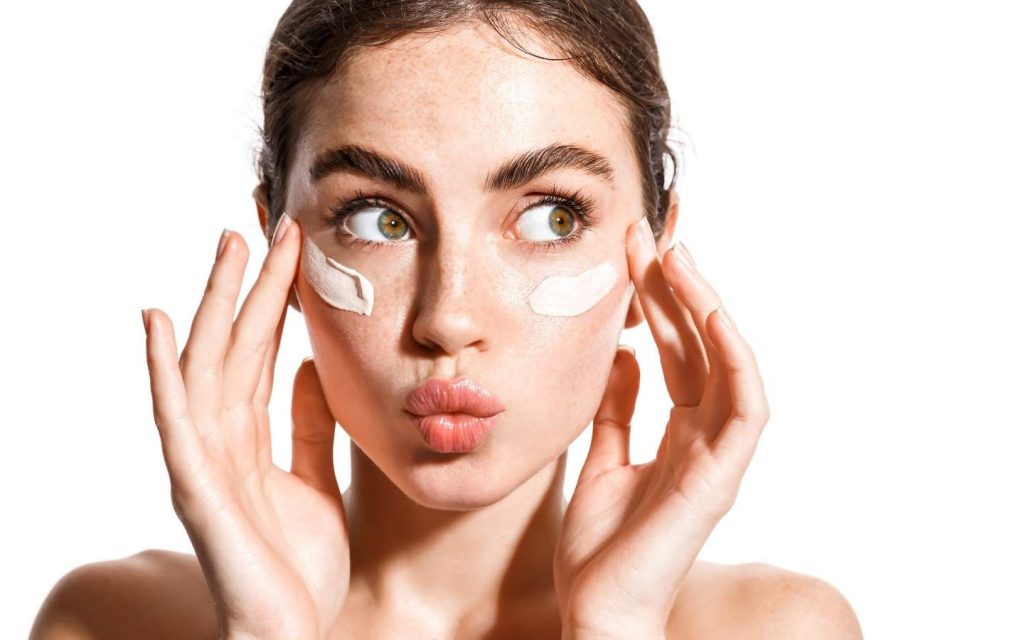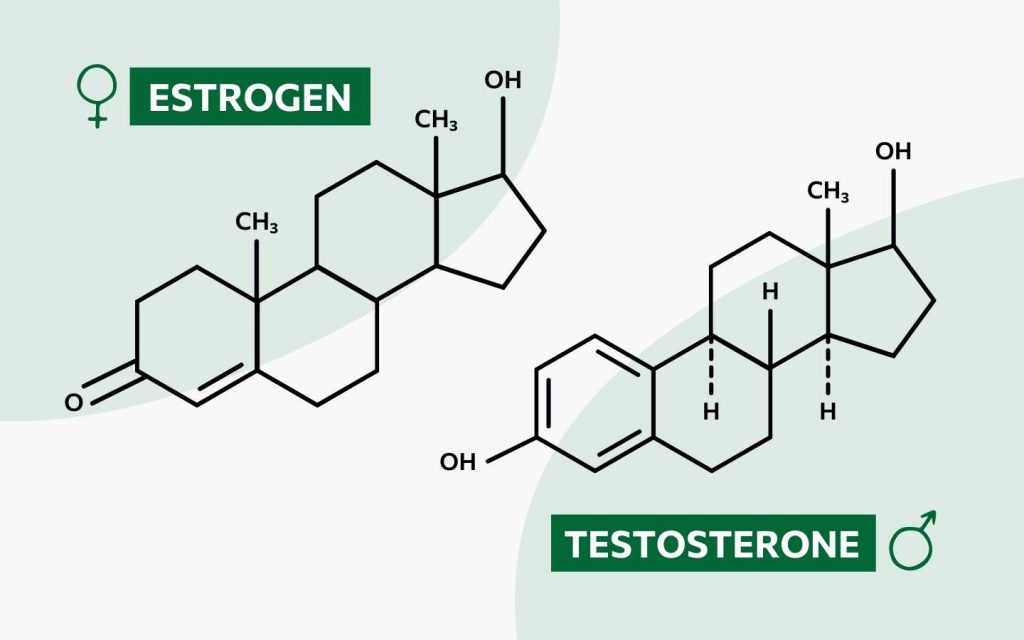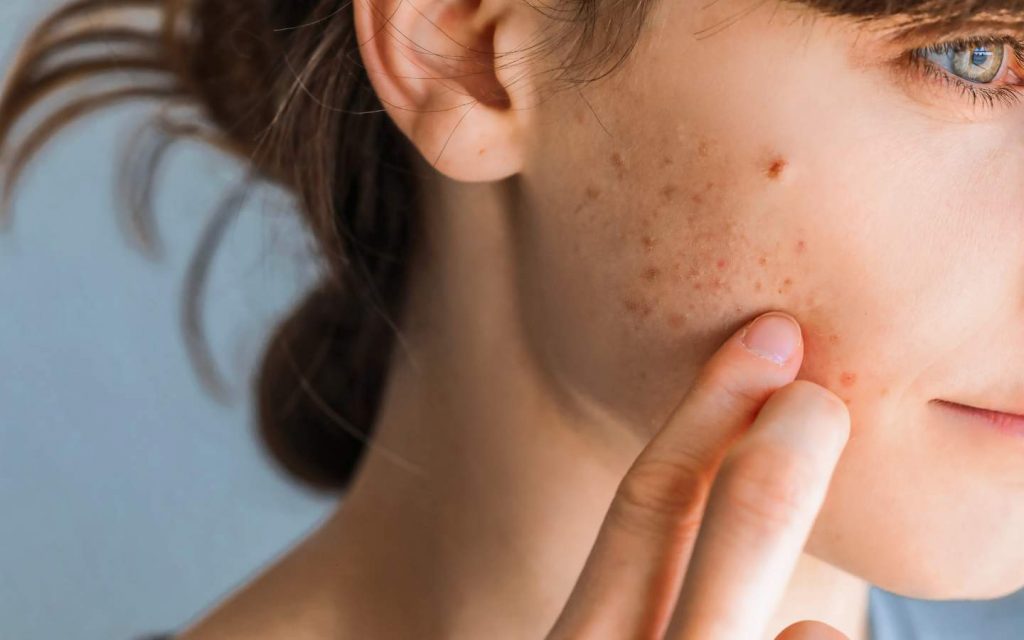

Do you eat a healthy diet, have a good skincare routine and yet pimples and blackheads remain your daily companions? Then the cause of your blemishes is probably hormonal. Countless factors influence our hormonal balance – and while most women have the menstrual cycle on their radar as an influencing factor on our skin, many find it difficult to recognize when stress may also be the trigger for our pimples and blemishes.
What is stress anyway?
Stress is not healthy. We all know that. Whether on our psyche or our body, stress has a direct impact on us. It is therefore not surprising that the negative effects of stress can also be reflected in the appearance of our skin.
But what exactly is stress? And why is it bad for us? In short, stress is our body’s reaction to external influences that we perceive as a burden or believe we are unable to cope with. These can be, for example, deadline pressure, professional events or social conflicts. Our body is put in a state of alert and a stress reaction occurs that affects the most diverse areas of our body – including our skin!
Why does stress acne develop?
Stress pimples are skin blemishes that occur due to stress or emotional strain. Stress pimples, also known as “stress acne” or “emotional acne”, are caused by various mechanisms that stress triggers in our body.
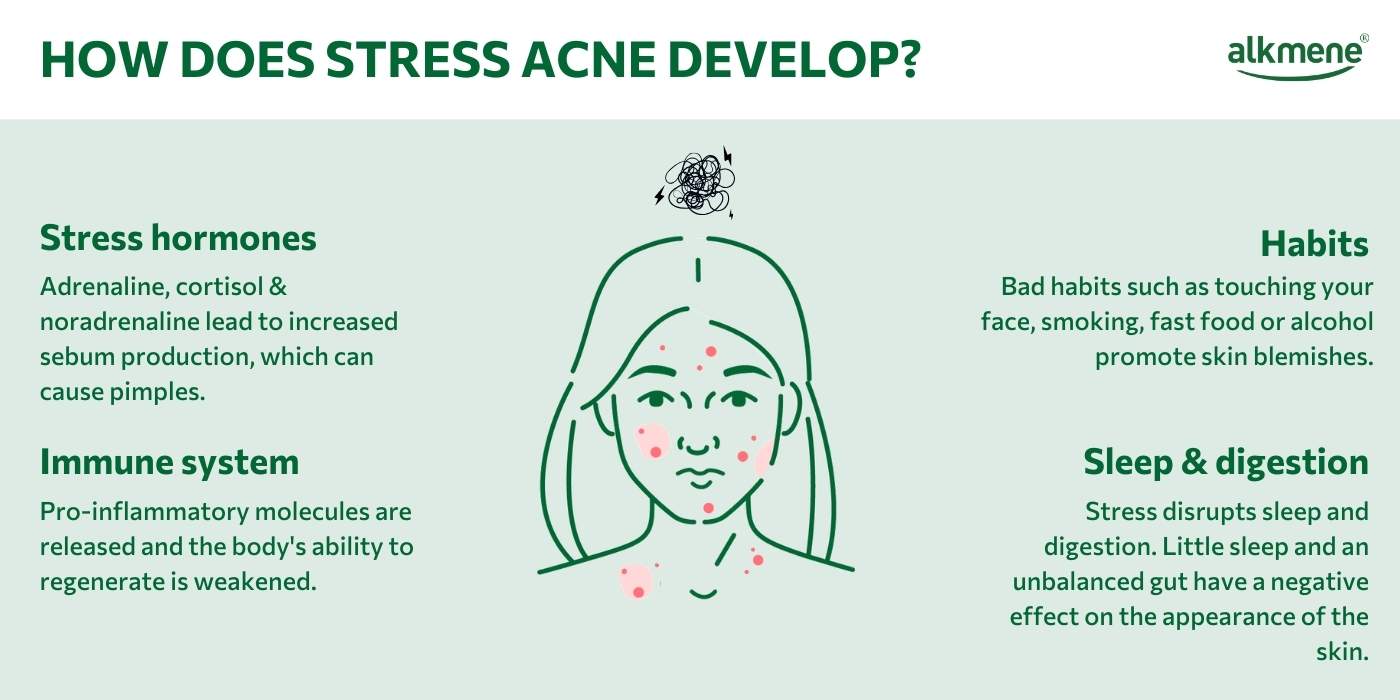
Firstly, stress hormones such as cortisol, adrenaline and noradrenaline are released in our body. These hormones not only influence our cardiovascular system, but can also increase sebum production. In the next step, the increased sebum production can clog the pores, which promotes the formation of stress pimples and blackheads. You can read more about the development of spots due to increased sebum production here. The stress hormone noradrenaline can also increase skin sensitivity, which also has an impact on the appearance of our skin.
The immune system is not spared the effects of stress either. When our body is under stress, pro-inflammatory molecules can be released, which can also promote inflammation of the skin, such as pimples. At the same time, stress inhibits the body’s ability to regenerate – this naturally also applies to the skin. If the skin cannot heal as usual, stress spots may last longer or scars may develop.
In addition, stressed people often develop bad habits. In stressful situations, some people tend to touch their face more often or to scratch or press on existing blemishes. This behavior not only hinders the healing of existing stress spots, but also promotes the development of new inflammations on the face, as bacteria can penetrate the weakened skin. Attempts to cope with stress by smoking, drinking alcohol or eating fast food naturally also have a negative impact on our skin.
Stress has an impact on our entire body and mind, so sleep disorders or lack of sleep and digestive problems are common symptoms of a stressed body. These symptoms in turn have an impact on our skin – because we know that getting enough sleep and a healthy gut are essential for radiant skin.

IMPORTANT: The development of spots is always influenced by various factors at the same time. In the same way, every person and every body reacts differently to stress. So while some people are more susceptible to the development of stress spots, others may show no effect on their skin even after prolonged stress.
Stress pimples on the face and other affected areas
Of course, stress can not only cause pimples on the face, but stress pimples can also appear on the back, chest or shoulders. Areas with a high number of sebaceous glands are particularly affected. The face is therefore one of the areas most frequently affected by stress pimples. Stress usually leads to pimples in the T-zone of the face, i.e. on the forehead, nose and chin. However, stress pimples on the cheeks are also not uncommon. There are also a lot of sebaceous glands on the back, which is why this area of the body is also prone to the appearance of stress-related pimples and blemishes. The décolleté, chest and shoulder areas are also susceptible to increased sebum production due to stress and an increased occurrence of pimples. Of course, other areas can always be affected – where the pimples appear can vary from person to person.
How do you recognize stress pimples?
Recognizing stress spots is not that easy. Many people are not aware of stress or do not associate it with their skin. In contrast to hormonal pimples, stress pimples do not follow a specific pattern when they appear. Pimples due to the menstrual cycle, for example, often appear shortly before the period – stress pimples can appear at any time and relatively suddenly. So it also takes a good body awareness to link stress and the appearance of stress pimples. However, stress-related acne can occur in conjunction with skin irritation, redness and itching, which is often not common with other types of acne.

